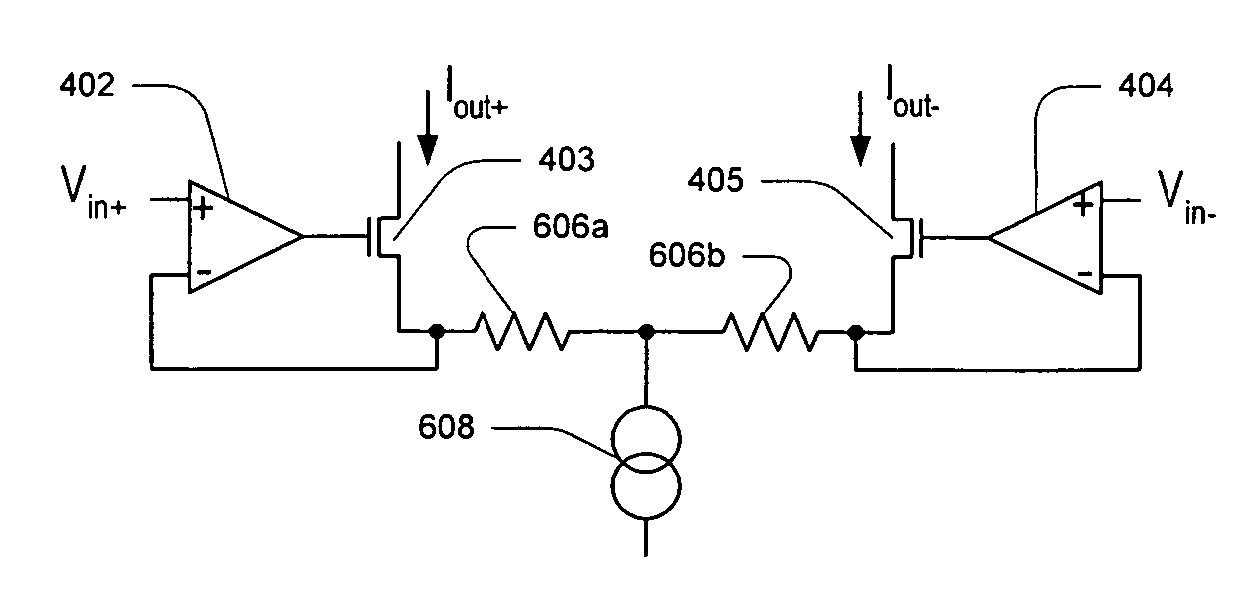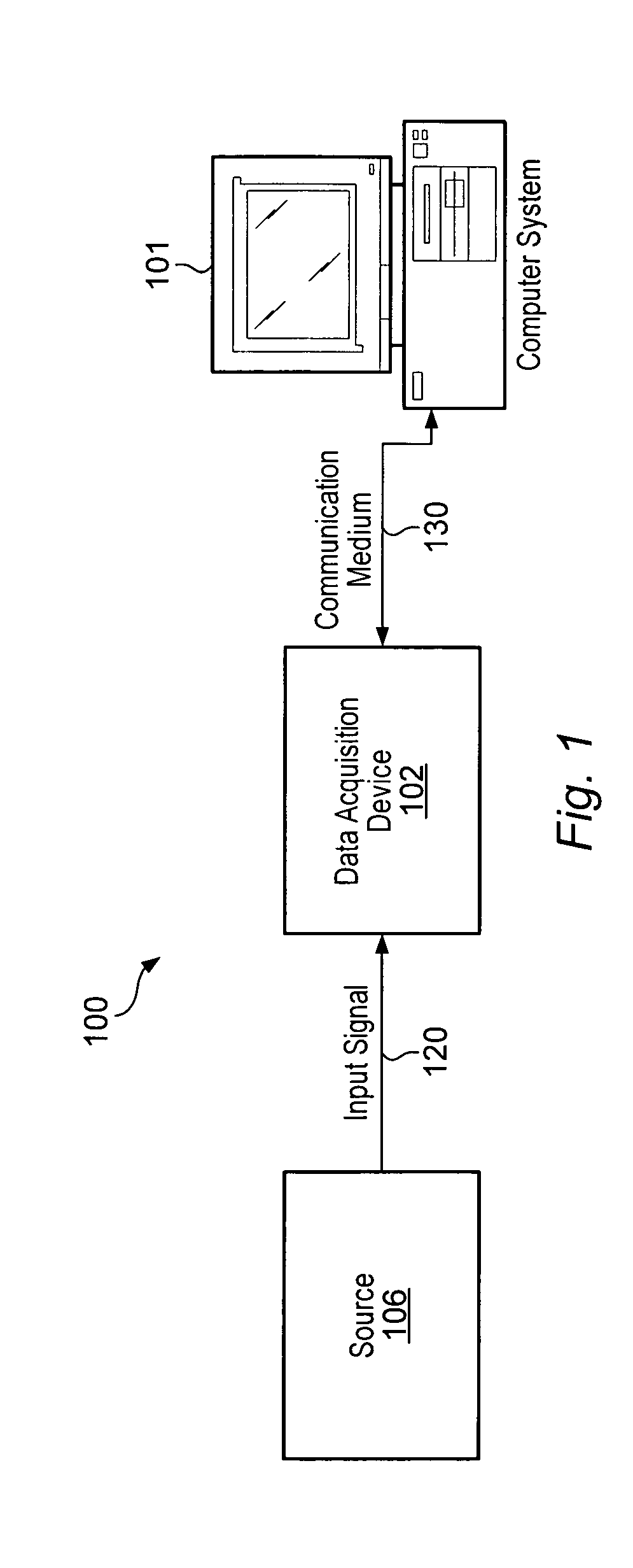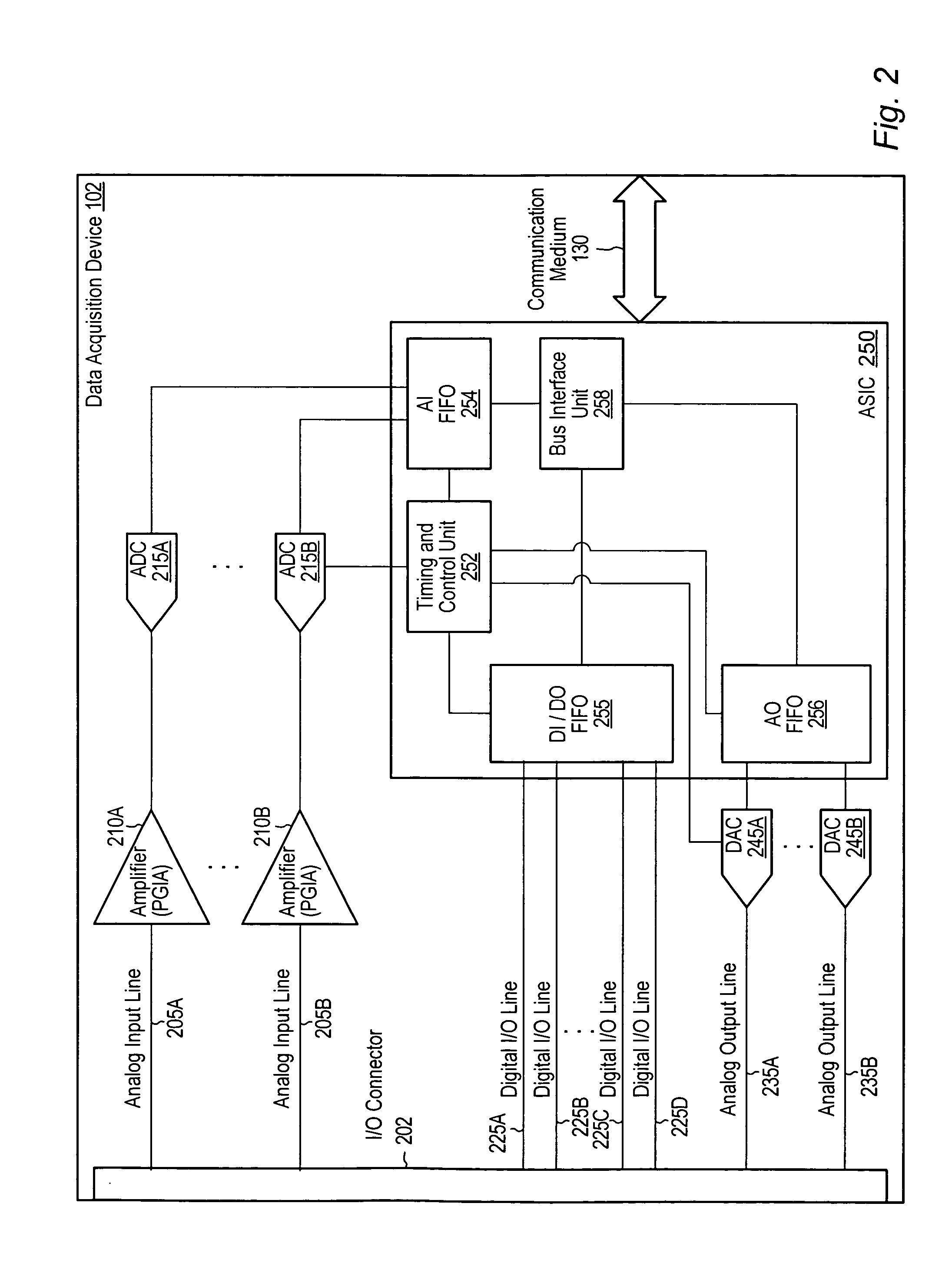Differential structure programmable gain instrumentation amplifier
a technology of programmable gain and instrumentation amplifier, which is applied in the direction of different amplifiers, amplifiers with semiconductor devices/discharge tubes, dc-amplifiers with dc-coupled stages, etc., can solve the problems of insufficient performance for certain daq systems, insufficient linearity and speed, inaccurate conversion data, etc., to achieve increased output swing, increase signal to noise ratio, and gain switching
- Summary
- Abstract
- Description
- Claims
- Application Information
AI Technical Summary
Benefits of technology
Problems solved by technology
Method used
Image
Examples
Embodiment Construction
[0036] As used herein, a “bootstrap” circuit or “bootstrapping” circuit refers to a circuit configured to drive the power rails of a specified circuit or specified sub-circuit with a signal that is substantially similar to the signal the specified circuit is configured to process, in order to make the signal appear small to the circuit. This may allow the specified circuit to operate in a more linear manner and to present a more manageable load to the signal. Furthermore, a “double multiplexer” refers to two multiplexers switching in concert, that is, the two multiplexers are selecting the same corresponding channels at the same time. For example, a signal may be an input to a first channel of a first multiplexer and another signal may be an input to a first channel of a second multiplexer. Then, whenever the first multiplexer is operated to select its respective first channel, the second multiplexer is operated to simultaneously select its own respective first channel. In some embo...
PUM
 Login to View More
Login to View More Abstract
Description
Claims
Application Information
 Login to View More
Login to View More - R&D
- Intellectual Property
- Life Sciences
- Materials
- Tech Scout
- Unparalleled Data Quality
- Higher Quality Content
- 60% Fewer Hallucinations
Browse by: Latest US Patents, China's latest patents, Technical Efficacy Thesaurus, Application Domain, Technology Topic, Popular Technical Reports.
© 2025 PatSnap. All rights reserved.Legal|Privacy policy|Modern Slavery Act Transparency Statement|Sitemap|About US| Contact US: help@patsnap.com



